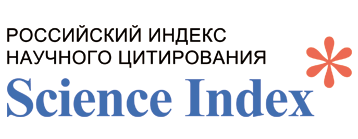FIVE GLOBAL CHALLENGES OF THE XXI CENTURY AND SUGGESTIONS FOR THEIR SOLUTION
Keywords:
micro-biofertilizer of MERC, food security, land degradation, the problems of fodder and water scarcit, global energy security, disadvantages of the first, second and third industrial revolutionsAbstract
The review article examines the five global challenges of the XXI century, identified by the head of state, concerning the provision of food to the population of our planet - the threat to global food security, resource depletion and land degradation, the problems of forage and pastures for livestock, acute water scarcity, global energy security, the shortcomings of the second and third industrial revolutions. Proposals for their solution are submitted. Based on reliable research results (2003-2016) carried out in specialized institutes, experimental and pilot works, as well as the application of a new generation of phytobiopreparations – micro-biofertilization MERS in the Republic of Kazakhstan on an area of more than 3 mill.hа (2003-2017), the State of Turkmenistan - 90 thousand hа (20152017), the Republic of Uzbekistan in 9 oblasts (2013, 2014, 2017, 2018), in 6 regions of the Russian Federation (2013-2014) MERS microbiological fertilizer is established: – obtaining, on the background of mineral nutrition, an additional harvest of spring soft wheat on rainfed lands – 3-3.5 c/ha, irrigation of raw cotton – 10-20 c/ha, potatoes and vegetables – 150-300 c/ha, fruit vineyard 100-150 c/ha, fodder-100-150 c/ha; – increase the productivity of agricultural crops with a decrease in the norm of mineral fertilizers by a factor of 1.5-3 times, a deficit of irrigation water and soil moisture of 1.3 and 1.7 times, salinity of lands, dry winds by 150-300%; – coverage, through the implementation of additional crops, the total cost of culti-vation of agricultural crops by 30-100% or more; – accumulation in the soil after harvesting of an additional crop of 38-40 kg/ha assimilated forms NPK nutrient elements and 5-20 t/ha organic. The results are the basis for solving the five global challenges of the XXI century.
References
[1] Arsenov V.V. Innovacionnoe razvitie agropromyshlennogo kompleksa / V.V. Arsenov, P.I. Ivancov. M.: Akademija upravlenija pri Prezidente Respubliki Belarus', 2012. 164 p.
[2] Usmanov S., Idrisov D.A., Isekeshev A.O., Ablazimov B.N. «Strategicheskaja politika himizacii agropromyshlennogo kompleksa Respubliki Kazahstan pri vstuplenii ee v VTO». Almaty, 2004. 200 p.
[3] Martynov V.A., Dynkin A.A., Machavariani G.I. Mir na rubezhe tysjacheletij (prognoz razvitija mirovoj jekonomiki do 2015g.). M.: «Izdatel'skij Dom NOVYJ VEK», 2001. 592 p.
[4] Usmanov S., Idrisov D.A., Saparov A. Ispol'zovanie neischerpaemoj jenergii pochvennyh mikro- i makroorganizmov – novoe napravlenie v obespechenii produktami pitanija naselenija nashej planety v XXI veke. Kniga 2. Vlijanie mikrobio- i makrobioudobrenij semejstva MJeRS na vosproizvodstvo pochvennogo plodorodija, povyshenie kachestva i produktivnosti sel'skohozjajstvennyh kul'tur». Almaty, 2011. 168 p.
[5] Usmanov S. Strategija razvitija proizvodstva i primenenija udobrenij. Almaty: Olzha, 2008. 71 p.
[6] Usmanov S. Kniga 2-ja. Opyt kommercializacii nauchnyh razrabotok i predlozhenija po industrializacii proizvodstva i primeneniju otechestvennyh sredstv pitanija i zashhity rastenij v Respubliki Kazahstan (2001-2004 gg.). Almaty: TOO «Poligrafkombinat», 2010. 220 p.

















